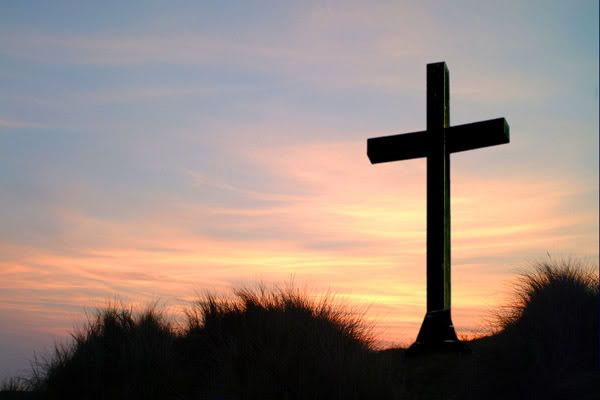Celebrating Music in Religion
Some History
Several types of Christian chant, which is often called plainsong, developed during the first 1000 years of the Christian era.
A repertory called Ambrosian chant developed at Milan, Italy; named after St. Ambrose, it is still used in some Roman Catholic services in Milan. In Spain, until about the 11th century, there was a chant repertory called Mozarabic chant, named after the Mozarab Christians who lived in Arab-dominated Spain during the Middle Ages. Today Mozarabic chant survives in a few Spanish cathedrals. Until the 9th century, France had its own chant repertory, called Gallican chant; a few traces of it remain today in the Gregorian repertory.
The Eastern Christian churches developed several types of chant before AD 1000, variants of which are still used. The Armenian, Byzantine, Russian, Greek, and Syrian repertories are the most important. Many of the original melodies in these repertories were incorporated into the Gregorian repertory. Among Protestant denominations only the Church of England has encouraged an extensive use of chant; its repertory, which is harmonized, is called Anglican chant.
In Rome a separate repertory developed that eventually spread throughout Europe and superseded the others. It is now called Gregorian chant after Pope Gregory I, known as the Great, who was active in collecting Roman chants, having them assigned specific places within the liturgy, and seeing that they were adopted by churches in other cities and countries. Today about 3000 different Gregorian melodies are known.
From the 12th through the 15th century the single-line chant of Gregorian plainsong expanded into polyphony. Genres such as the antiphon, in which choir members alternated singing portions of a psalm or verse; the motet, a multipart setting of a sacred text; and the mass (see Mass, Musical Settings of) were the principal vehicles for the development of Western polyphony during these centuries. Their counterparts in 16th-century post-Reformation England were the anthem and service. The great masters of church music of the 15th and 16th centuries included Guillaume Dufay, from France; Giovanni da Palestrina, from Italy; Tomás Luis de Victoria, from Spain; and William Byrd, from England. In the 16th century the madrigal, the secular equivalent of the motet, was developed. Italian composers Luca Marenzio and Claudio Monteverdi excelled in writing madrigals. During that time much ensemble singing was without instrumental accompaniment (a cappella), a tradition maintained in most modern part-songs.
The outstanding composers of the baroque era (about 1600 to about 1750) were Handel and Bach, masters of their native German style and of advanced Italian, French, and English techniques. Handel settled in England and developed the oratorio, a large-scale setting of a dramatic text for choir and orchestra, which originated in the mid-16th century. Bach based his Passion oratorios and many examples of the church cantata (similar to an oratorio but smaller in scale) on Lutheran chorales. Composers such as Henry Purcell, from England, often used the same compositional techniques in their choral odes for civil and court occasions as they did in their church music.
In the classical era (about 1750 to about 1820) the orchestra almost equaled the choir in importance in the masses of German composer Ludwig van Beethoven and Austrian composers Wolfgang Amadeus Mozart and Joseph Haydn. Composers of large choral works began to use musical instruments in many ways to reinforce the meaning of the texts, and this trend continued into the 20th century. Notable examples include the Requiem (1874) of Giuseppe Verdi, from Italy; the German Requiem (1868) of Johannes Brahms, from Germany; The Dream of Gerontius (1900) by Sir Edward Elgar, from England; the Psalmus Hungaricus (1923) by Zoltán Kodály, from Hungary; and Carmina Burana (1937) by Carl Orff, from Germany.
During the romantic era (about 1820 to about 1900), composers often turned to the great poets for the texts of their secular choral works. For example, both the First Walpurgis Night (1831, revised 1843) by German composer Felix Mendelssohn and The Damnation of Faust (1846) by French composer Hector Berlioz used texts by the German poet Johann Wolfgang von Goethe. The introduction of voices into a previously purely instrumental genre, the symphony, brought choral symphonies into the repertoire. The first and most famous is Beethoven's Ninth Symphony (1824), the last movement of which incorporates a choral setting of the "Ode to Joy," by German poet Friedrich von Schiller. Among its most important successors were the Second, Third, and Eighth symphonies (1894, 1895, 1907) of Austrian composer Gustav Mahler. Advanced 20th-century idioms were reflected in later works such as the Symphony of Psalms (1930) by Russian-born Igor Stravinsky, Canti di prigionia (Songs of Prison, 1941) by Italian Luigi Dallapiccola, and the Passion According to Saint Luke (1966) by Krzysztof Penderecki, from Poland.
Gregorian Chants
Lost in Meditation: Meditative Gregorian Chants by various performers
Bach - Mass in B Minor
The Atlanta Symphony Orchestra and Chamber Chorus conducted by Robert Shaw
Mozart - Requiem in D Minor
Academy and Chorus of St. Martin in the Field conducted by Sir Neville Marriner

